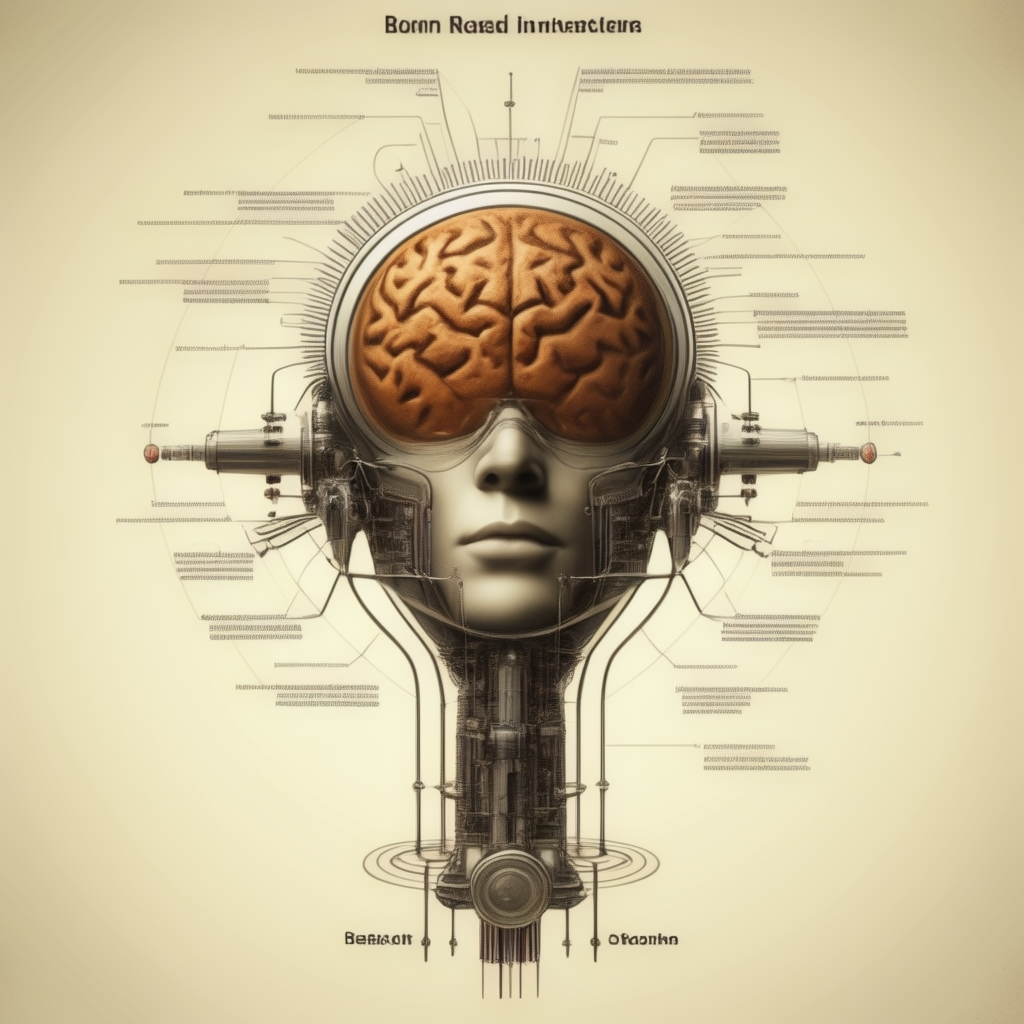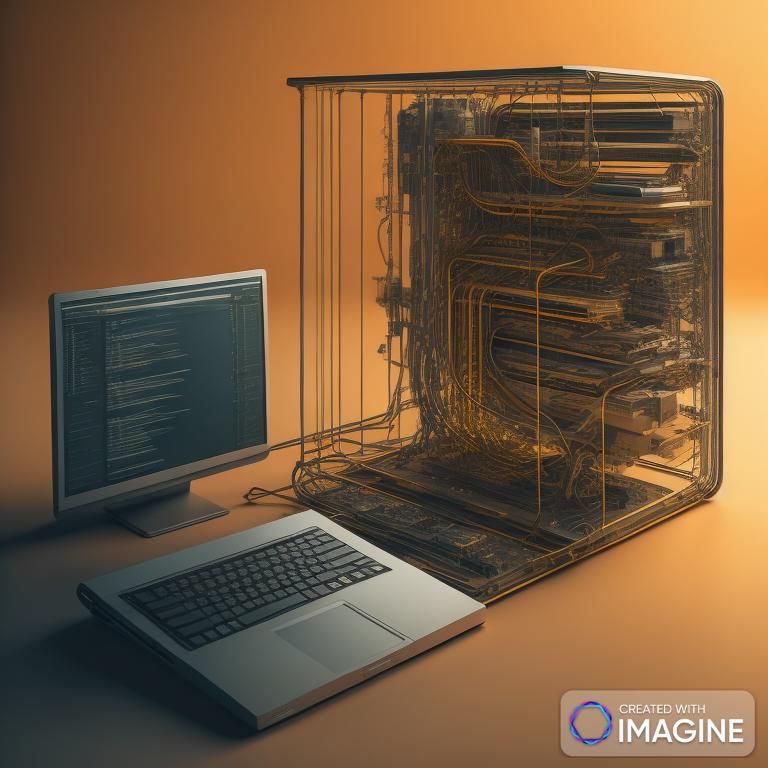The Evolution and Impact of Computational Chips in Laptops and Mobiles
Introduction: The Genesis of Computational Chips
The modern world is inconceivable without the tiny yet powerful computational chips that drive our laptops and mobile devices. These chips are the heart of electronic devices, transforming how we work, communicate, and entertain ourselves. But how did these marvels of engineering come to be? Who were the visionaries behind their invention, and what thought processes and scientific principles guided their development? This blog post delves into the fascinating journey of computational chips, from their inception to their future prospects, exploring their evolution, applications, and the intricate science and engineering behind them.
The Birth of Computational Chips: Visionaries and Their Thought Processes
The invention of computational chips can be traced back to the mid-20th century. The initial motivation was to create more efficient and compact ways to perform calculations, which were previously done by large, cumbersome machines.
The Origin Story: Early Inspirations and Challenges
Early Inspirations
Before the invention of ![]() chips, early computers relied on vacuum tubes and mechanical switches. These early machines, such as the ENIAC (Electronic Numerical Integrator and Computer), were massive, consuming entire rooms and vast amounts of energy. The desire to miniaturize and enhance computational efficiency led to the conceptualization of integrated circuits.
chips, early computers relied on vacuum tubes and mechanical switches. These early machines, such as the ENIAC (Electronic Numerical Integrator and Computer), were massive, consuming entire rooms and vast amounts of energy. The desire to miniaturize and enhance computational efficiency led to the conceptualization of integrated circuits.
Initial Challenges
The transition from vacuum tubes to semiconductor devices wasn’t without its challenges. The primary hurdles included material inconsistencies, difficulties in manufacturing reliable semiconductor devices, and the need for innovation in circuit design to utilize these new materials effectively.
Key Inventors and Milestones
- Jack Kilby and Robert Noyce: Often credited as the co-inventors of the integrated circuit, Jack Kilby of Texas Instruments and Robert Noyce of Fairchild Semiconductor independently developed the first working integrated circuits in 1958-1959. Kilby’s chip was made of germanium, while Noyce’s was silicon-based, which later became the industry standard.
- Intel and the Microprocessor Revolution: In 1971, Intel introduced the 4004, the world’s first microprocessor, designed by Ted Hoff, Federico Faggin, and Stanley Mazor. This chip integrated all the functions of a computer’s central processing unit (CPU) onto a single chip, marking a significant milestone in computing.
Thought Process Behind the Invention
The primary thought process behind the invention of computational chips was to reduce the size and increase the efficiency of electronic devices. By integrating multiple transistors onto a single chip, engineers could create more powerful and reliable devices that consumed less power and space.
Evolution of Computational Chips: From Early Designs to Modern Marvels
Over the decades, computational chips have undergone remarkable evolution, driven by advancements in materials science, manufacturing techniques, and computer architecture.
Key Phases of Evolution
- Early Integrated Circuits (1960s-1970s): The initial integrated circuits had a few dozen transistors. They were used primarily in military applications and mainframe computers.
- Microprocessor Era (1970s-1980s): The introduction of microprocessors like the Intel 8080 and Motorola 6800 revolutionized computing. These chips found their way into personal computers, leading to the rise of companies like Apple and IBM.
- Advancements in Miniaturization (1980s-2000s): The number of transistors on a chip grew exponentially, following Moore’s Law, which predicted the doubling of transistors approximately every two years. This period saw the development of powerful CPUs and GPUs, enabling sophisticated graphics and computing capabilities.
- Mobile Revolution (2000s-Present): With the advent of smartphones and tablets, computational chips became more energy-efficient and specialized. System-on-Chip (SoC) designs, which integrate multiple components like CPU, GPU, and memory onto a single chip, became standard in mobile devices.
Technological Evolution: The Road to Modern Microprocessors
Moore’s Law and Its Impact
Gordon Moore, co-founder of Intel, famously predicted that the number of transistors on a chip would double approximately every two years, leading to exponential growth in computing power. This observation, known as Moore’s Law, guided the semiconductor industry for decades, driving relentless miniaturization and performance improvements.
Transition to Multicore Processors
As the limits of single-core processor performance were reached, the industry shifted to multicore processors. These processors could handle multiple tasks simultaneously, significantly improving performance and efficiency. This transition was essential for meeting the demands of modern software, which increasingly required parallel processing capabilities.
Applications of Computational Chips
Computational chips have a wide range of applications, transforming various aspects of our daily lives.
In Laptops and Computers
- Processing Power: CPUs and GPUs handle complex computations, enabling tasks ranging from simple word processing to high-end gaming and scientific simulations.
- Data Storage and Management: Chips like SSD controllers manage data storage, providing faster access to information.
- Connectivity: Networking chips enable wired and wireless communications, including Wi-Fi and Bluetooth.
Applications Beyond Traditional Computing
IoT (Internet of Things)
Computational chips are now ubiquitous in the Internet of Things (IoT), powering a wide range of devices from smart home appliances to industrial sensors. These chips enable real-time data processing and connectivity, transforming everyday objects into intelligent, interconnected devices.
Automotive Industry
In the automotive sector, computational chips are crucial for advanced driver-assistance systems (ADAS), autonomous driving technologies, and in-car entertainment systems. These chips process vast amounts of data from sensors, cameras, and other inputs to ensure safety and enhance the driving experience.
In Mobile Devices
- Multimedia: SoCs in smartphones handle everything from touch input to high-definition video playback and camera operations.
- Communication: Cellular modems and other communication chips facilitate global connectivity.
- Sensors and Automation: Chips manage data from various sensors (e.g., accelerometers, gyroscopes) to enhance user experiences.
Pioneering Companies and Technological Milestones
Texas Instruments and Fairchild Semiconductor
Texas Instruments and Fairchild Semiconductor were pivotal in the development of integrated circuits. Kilby’s work at Texas Instruments led to the creation of the first working integrated circuit in 1958. Almost simultaneously, Robert Noyce at Fairchild Semiconductor developed a silicon-based integrated circuit, which proved to be more practical for mass production.
Intel and AMD
Intel and AMD have been central to the evolution of computational chips. Intel’s introduction of the 4004 microprocessor in 1971 was followed by the development of increasingly powerful processors, such as the 8080 and the famous x86 series, which laid the groundwork for modern computing. AMD, while often seen as Intel’s competitor, also played a crucial role, offering alternative architectures and pushing innovations that benefited the entire industry.
The Future of Computational Chips
The future of computational chips lies in further miniaturization, increased efficiency, and integration of emerging technologies like artificial intelligence (AI) and quantum computing.
Trends to Watch
- AI Integration: Future chips will likely incorporate specialized AI processors to handle machine learning tasks, making devices smarter and more responsive.
- Quantum Computing: Research in quantum computing could lead to new types of chips that perform certain calculations much faster than classical computers.
- Advanced Materials: Innovations in materials science, such as graphene and other nanomaterials, could lead to more powerful and efficient chips.
Future Trends and Emerging Technologies
AI and Machine Learning
The integration of specialized AI processors, such as GPUs and TPUs (Tensor Processing Units), into computational chips is a significant trend. These processors are designed to handle the parallel processing requirements of AI and machine learning algorithms, enabling more efficient and powerful AI applications in devices.
Neuromorphic Computing
Neuromorphic computing, which mimics the neural structure of the human brain, is an emerging field that promises to revolutionize computational chips. Neuromorphic chips, such as IBM’s TrueNorth, aim to achieve high efficiency in tasks related to perception, pattern recognition, and decision-making, offering a new paradigm for computing.
The Future Landscape: What Lies Ahead
Integration of Quantum Computing
Quantum computing, with its potential to solve certain problems exponentially faster than classical computers, represents a frontier that could transform computational chips. Hybrid systems that integrate quantum and classical processors are a potential future direction, leveraging the strengths of both paradigms.
Advancements in Materials Science
Ongoing research in materials science aims to discover new materials that can enhance chip performance, reduce power consumption, and overcome the physical limitations of current semiconductor technologies. Graphene, carbon nanotubes, and other advanced materials hold promise for the next generation of computational chips.
How Computation Happens in Devices: The Science Behind the Magic
When you interact with a laptop or mobile device, a complex sequence of computations and data transfers occurs almost instantaneously. Here’s a simplified overview of what happens:
- Input Processing: When you touch your screen or type on your keyboard, sensors detect the input and send signals to the CPU.
- Data Handling: The CPU processes these signals, retrieves necessary data from memory or storage, and performs the required computations.
- Output Generation: The results are then sent to the display, generating the visual output you see. This process involves GPUs for rendering graphics.
- Background Tasks: Simultaneously, other components manage tasks like network connectivity, power management, and sensor data processing.
The Science and Engineering Behind Computational Chips
Scientific Principles
- Semiconductor Physics: The foundation of chip design lies in understanding how electrons move through semiconductor materials like silicon.
- Quantum Mechanics: At nanoscales, quantum effects become significant, affecting how transistors operate.
The Underlying Science: Quantum Effects and Beyond
Quantum Tunneling
As transistors have shrunk to nanometer scales, quantum effects like tunneling have become significant. Quantum tunneling, where electrons pass through barriers they classically shouldn’t be able to, poses challenges and opportunities for chip design, influencing both power consumption and computational speed.
Spintronics
Spintronics, which exploits the intrinsic spin of electrons along with their charge, is another area of research with potential implications for future computational chips. Spintronic devices could offer faster processing speeds and lower power consumption compared to traditional semiconductor devices.
Engineering Aspects
- Photolithography: This process involves using light to etch patterns onto silicon wafers, creating the intricate circuits of a chip.
- Integration and Packaging: Once the circuits are created, they must be integrated and packaged into a form that can be mounted onto devices.
- Thermal Management: Managing the heat generated by millions of transistors is crucial for maintaining performance and reliability.
The Engineering Marvels: Fabrication Techniques and Innovations
Extreme Ultraviolet Lithography (EUV)
EUV lithography is a cutting-edge technique used to etch incredibly small patterns onto silicon wafers, enabling the production of chips with features measured in nanometers. This technology is critical for continuing the trend of miniaturization and improving chip performance.
Three-Dimensional (3D) Integration
3D integration involves stacking multiple layers of semiconductor devices to create a single chip with enhanced performance and reduced latency. This approach addresses the limitations of planar scaling and offers new possibilities for complex, high-performance chip architectures.
How Devices Compute: A Deeper Look
Instruction Fetch and Decode
When you interact with a device, the CPU fetches instructions from memory and decodes them to understand what actions to perform. This involves intricate coordination between different parts of the processor, ensuring that instructions are executed efficiently and accurately.
Memory Hierarchies and Caching
Efficient computation relies on memory hierarchies and caching mechanisms. Processors use caches to store frequently accessed data closer to the CPU, reducing access times and improving overall performance. The design and management of these memory hierarchies are crucial for maintaining high computational efficiency.
Conclusion: The Ever-Evolving Landscape of Computational Chips
The journey of computational chips from their early inception to their current form is a testament to human ingenuity and relentless pursuit of technological advancement. These chips have revolutionized how we interact with technology, and their future promises even more groundbreaking innovations. As we continue to push the boundaries of science and engineering, the tiny chips inside our devices will undoubtedly play an even more significant role in shaping our digital world.
The journey of computational chips from their nascent stages to the sophisticated, multi-functional processors of today is a testament to human ingenuity and scientific progress. As we look to the future, the ongoing evolution of these chips will continue to drive technological advancements, shaping the digital landscape in ways we can only begin to imagine. The integration of AI, quantum computing, and new materials will undoubtedly open new horizons, making the future of computational chips an exciting field to watch.






